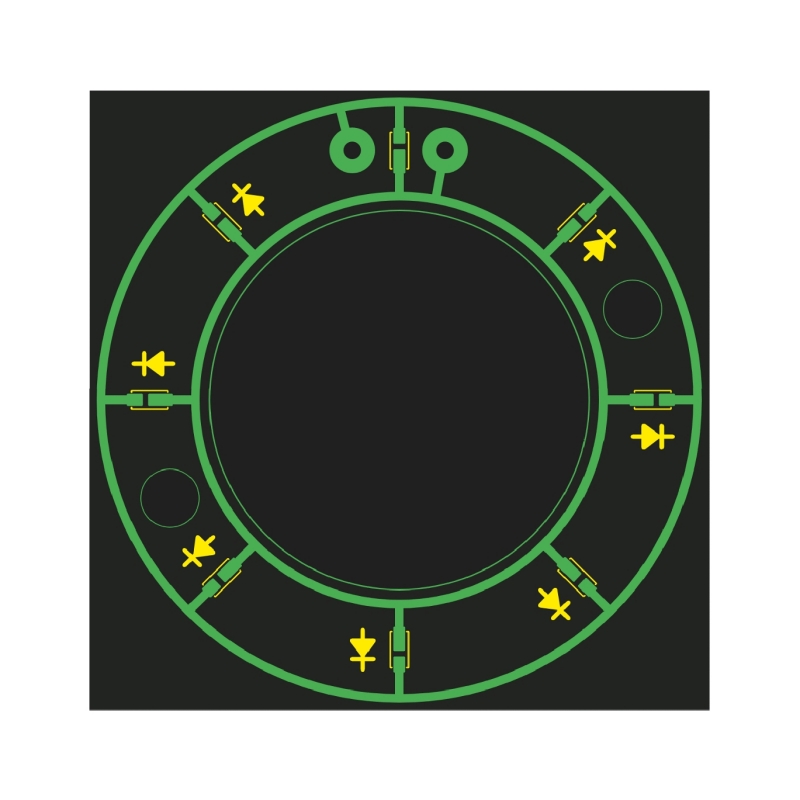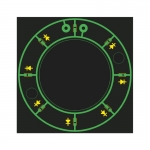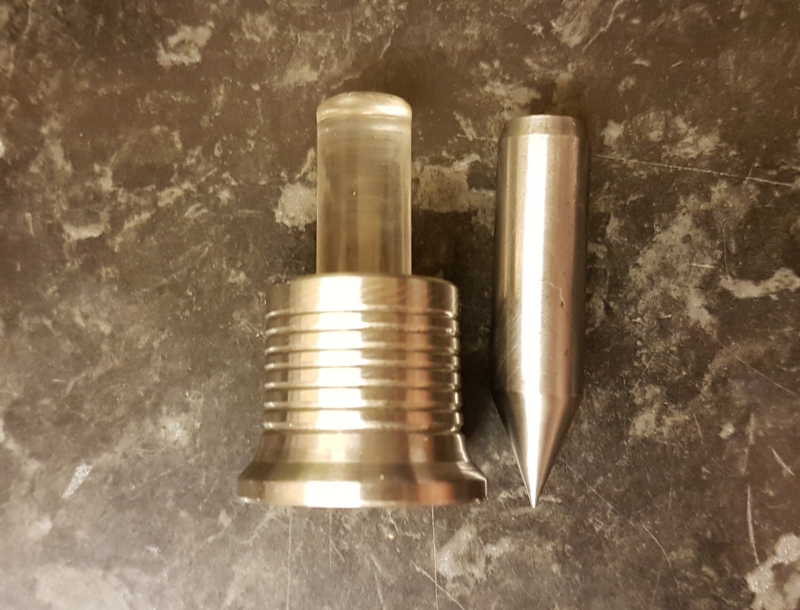As a matter of fact, I have indeed been looking into doing just that, though when you posted, much of my idea was still in my head, so figured I should at least make a sketch of the concept so I had something to present with my response.
As it happens, I like to dabble in electronic engineering from time to time and actually enjoy working with surface mount components. I also have PCB design software so I came up with a ring design for the punch base light that will host upto eight surface mounted LEDs, each just 2mm x 1.25mm:
The LEDs are wired in parallel, that way the voltage requirement stays the same regardless of the number of LEDs in the chain, meaning that any number from one to eight can be soldered in place and the circuit will still function. The obvious advantage here being that if one ever gave up the ghost, it doesn't break the chain causing all the others to go out.
The trade-off is that the amount of current, or amps required to run the system increases with every LED added to the chain. Initially, this is what put me off thinking about this idea seriously as LEDs are a hungry lot when they get together for a party and as advanced as we are in so many fields, batteries are literally centuries behind so I was unsure whether I would find a combination suitably compact enough for this idea to become a reality.
However, there is a drive within the industry to take up the slack in portable power by making semiconductors that require less energy in the first place and while I've been out of the loop playing with my machines since putting my home shop together, I was rather pleased to find some surface mount LEDs with a 3v 2mA spec had been developed that still provide a decent amount of lumins
Given that the combined current draw for all eight LEDs would only be 16mA, the system coupd get away with using very small button cells, in this case two SR59. Each one is 1.55v @20mAh and will be placed in series to combine the voltage output to 3.1v which is within the LEDs working voltage range. Even with a meagre 20mAh capacity, the circuit will still produce over an hour of "on" time. Given that they are only used for moments at a time, an hour likely equates to months before the batteries will need changing so it looks like it should be a goer.
Admittedly it took a little thinking to work out the details on how to integrate the electronics but eventually I split the punch base into two halves that screw together, with a plastic housing ring for the button and batteries sandwiched in between so it is secured in place when fully assembled.
The foot of the base hosts the plastic housing ring within the seat in the upper portion and there is a hole for a mounting screw which simply holds it down to capture the pushbutton and prevent the housing from spinning when the neck mates with it as it's aseembled.
The light ring gets screwed in the recess from underneath so the LEDs are facing downward. I may make an acrylic ring cover for the light ring that snaps in place but having just thought of it, I will have to add it to my concept sketch at a later date.
Being it's just a conceptual drawing at the moment, it's not to scale but do have a rudimentary figure of 35mm for the neck of the base as it's the smallest diameter I could fit the electronics into (see attached PDF for higher res image)
Self Illuminating Optical Centre Punch Base Concept.pdf


 LinkBack URL
LinkBack URL About LinkBacks
About LinkBacks





 Reply With Quote
Reply With Quote




Bookmarks